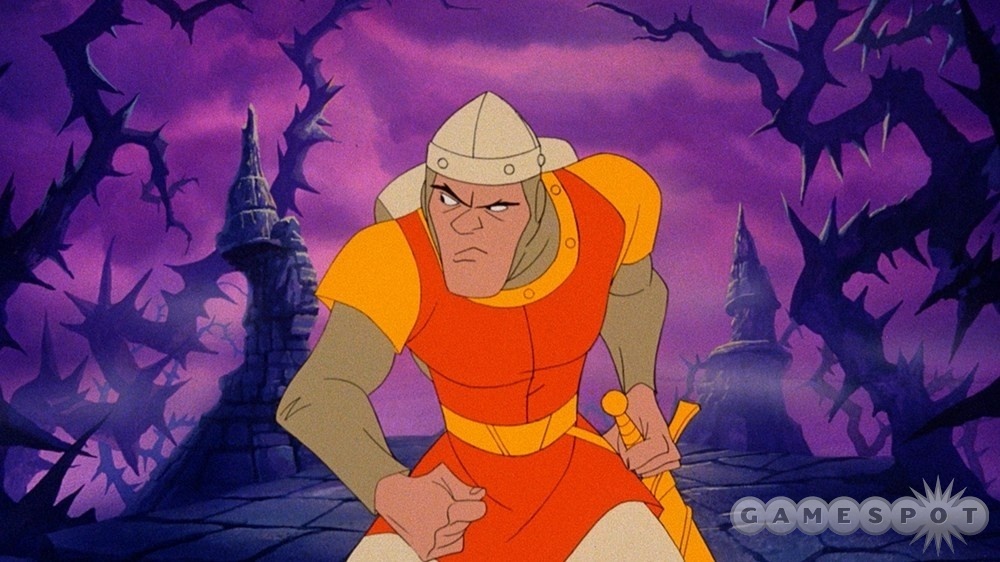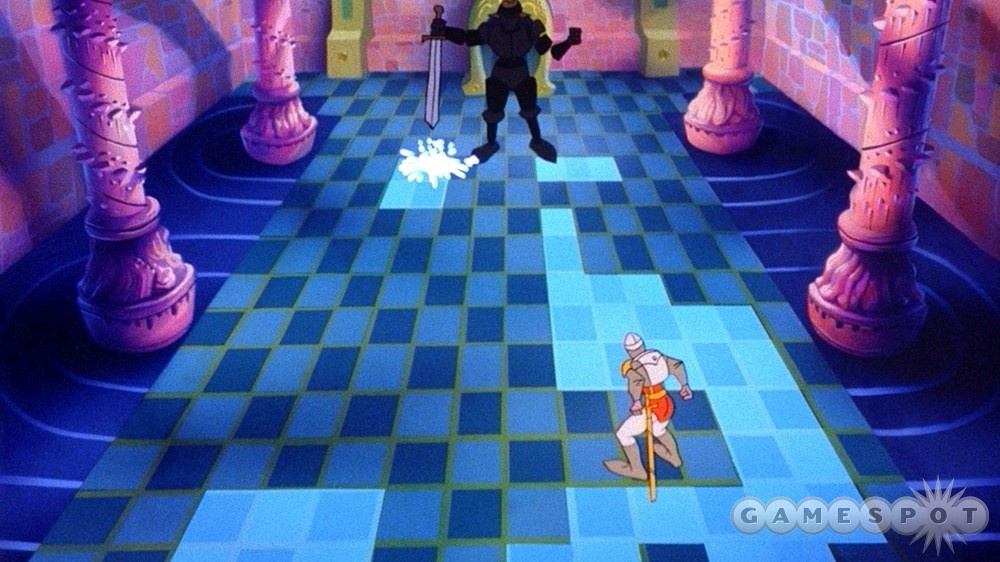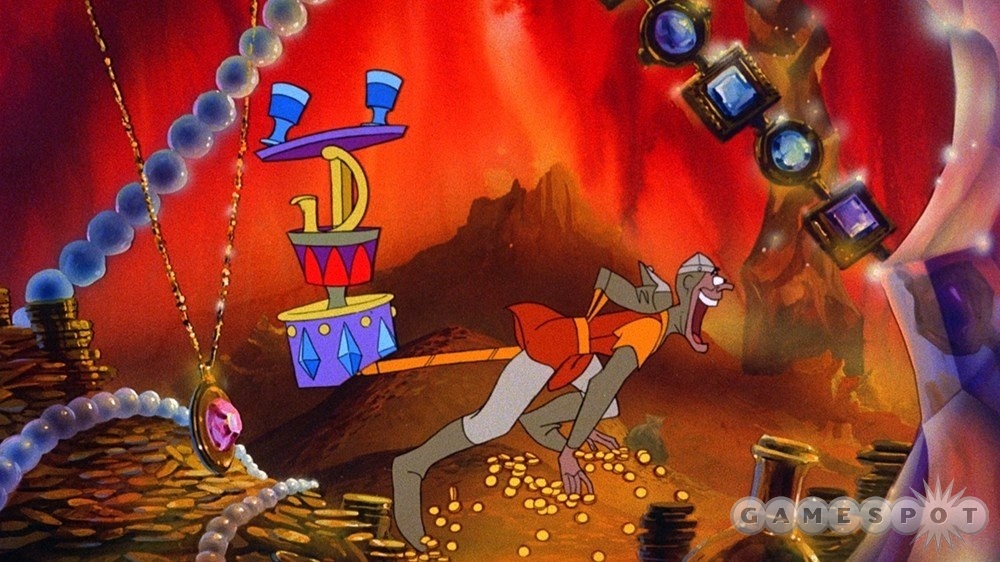Considering that the Xbox 360 has been around for over six years, it's a little surprising that we haven't seen a port of the 1983 classic Dragon's Lair until now. Not only is it one of only three games accorded permanent exhibition status at the Smithsonian Institution (along with Pac-Man and Pong), but it has also managed to worm its way onto everything from the Commodore 64 and NES to the iPhone in the intervening 29 years. Most of these were uninspired rehashes that brought almost nothing new to the experience, but this latest incarnation's leaderboards and Kinect support at least mark a step toward variety. Unfortunately, that's still not enough to make it worth your time.

Dragon's Lair was a colossal hit back in the days when visuals in video games were first evolving from wads of pixels to recognizable and iconic sprites such as Mario. Its appeal lay in its novelty. Harnessing the talents of celebrated animator Don Bluth, Dragon's Lair marked an ambitious attempt to jump over 10 years into the future, chucking the standard digital conventions of the day and being based entirely on animation.
At the time, it worked. In an age when Mario still wasn't "super," arcade goers could laugh at the antics of the goofy knight named Dirk the Daring on his quest to rescue the sultry Princess Daphne from the clutches of the dragon Singe. Instead of deaths that just knocked the hero offscreen, you saw poor Dirk subjected to snake strangulations and rib-cracking impacts. And instead of saving some generic princess, you won the hand of Princess Daphne, whose Playboy-inspired model turns heads as easily now as it did back then.
Even so, its animated focus demands simple gameplay even by the standards of its era. Indeed, little more than an interactive movie at heart, it's best understood in modern terms as the direct ancestor of the quick-time events (or QTEs) sprinkled throughout countless modern action games. Then as now, the entire game revolves around knowing when to press one of the four directions on a D-pad to move Dirk out of the way of danger, and using a button to slash your sword. Miss one of the lightning-fast prompts, and you find that death comes easy and often in Singe's domain. Unfortunately, such a setup means that success relies far more on memorization than true skill. The resulting trail and error is even more disappointing upon the realization that some of Dragon's Lair's 29 scenes repeat throughout Dirk's brief journey.

In theory, at least, Dragon's Lair seems like a perfect match for the Kinect. Freed of the constraints of a gamepad, you can act out Dirk's simple movements for yourself, jumping left as he dodges a snake to the right, or moving forward as he tries to wiggle through a hole in a rapidly closing wall. When it's time to stab at Singe, you battle him with a slashing motion of your arm. Unfortunately, it's those very moments that give Dragon's Lair so much trouble. Since so much of the game hinges on the speed of your responses, the time it takes to get back into place after a strafe to the left often leaves you in a bad spot when you need to strafe back to the right.
The slashing motions fare even worse because they don't always register. This Kinect mode compensates for such troubles by introducing optional directional indicators and allowing for occasional slips, but all in all it only adds to the frustration of an already unforgiving game. Gameplay gets even more frustrating in the local cooperative mode, which requires you to switch players every time the other player dies. And since Dirk has a nasty habit of dying every 10 seconds or so, the experience is more of a hassle than it's worth.
You might find some additional replay value in the multiple difficulty modes that strip the gameplay of its prompts or limit how many continues Dirk has after dying (in other words, making it closer to the 1983 arcade gameplay), but even then you'll probably master each within an hour. Leaderboards for the Kinect and gamepad modes foster some sense of competition, but Dragon's Lair is not the type of game that you'll set aside days or weeks for in an attempt to dominate the lists.
As a small bonus, this version lets you sit back and watch Dirk's adventures as an animated short if you're tired of tripping over yourself with the Kinect or missing cues on the gamepad. It's a welcome addition, since focusing on the necessary moves often means you can't fully appreciate the animation for itself unless you're watching someone else play. At the very least, it's useful as a walkthrough if you're having trouble on the promptless hard mode. Bluth's animation is as impressive as ever, although seeing it stripped of the gameplay only highlights the limits of the sound design. Aside from Dirk's shrieks of terror and some musical cues signaling a successful execution of a room, the only noteworthy sound file is the ditzy voice of Daphne explaining how to vanquish Singe.

Today, Dragon's Lair is little more than a historical curio. It takes barely more than half an hour to complete the game on its hardest modes, and a dedicated player could probably complete each achievement inside of five hours. The Kinect support is novel but ultimately more frustrating than the standard gamepad gameplay. In the end, you're better off finding a modern game with occasional QTEs scattered throughout its levels and smirking at your awareness of where such sequences evolved from.